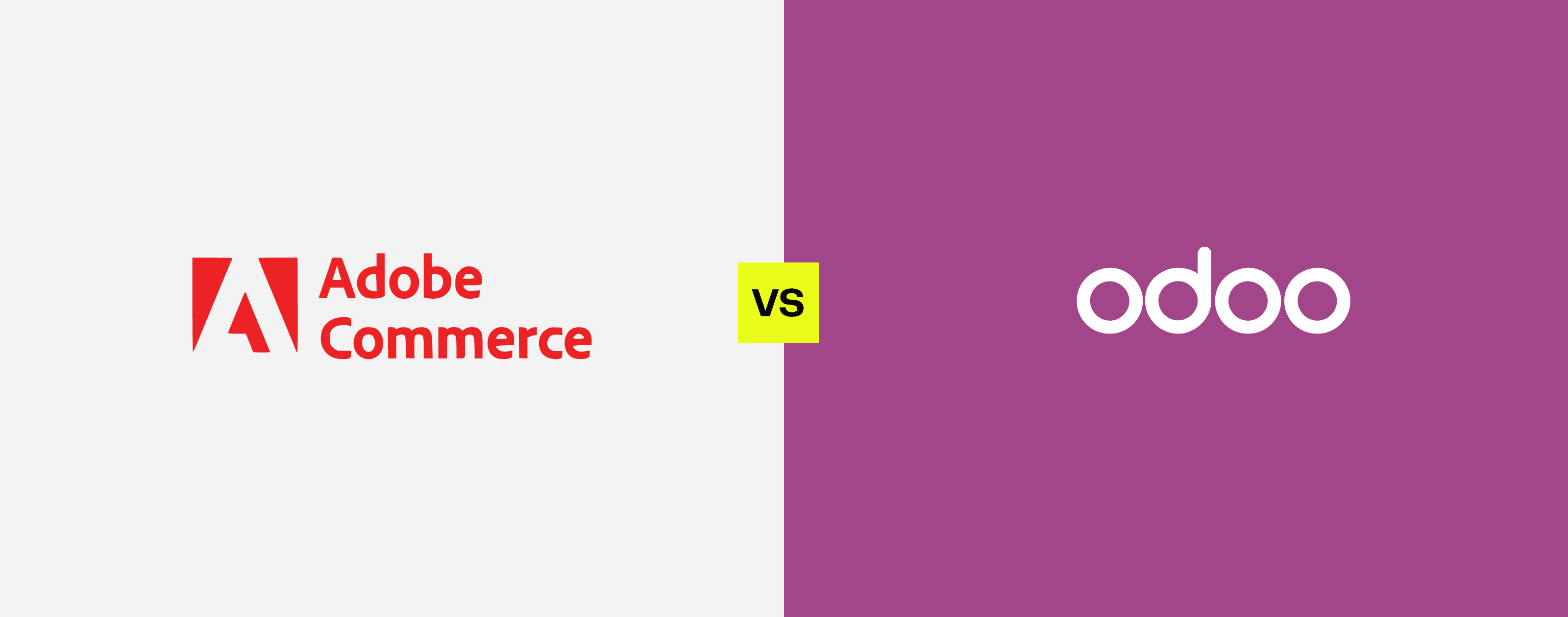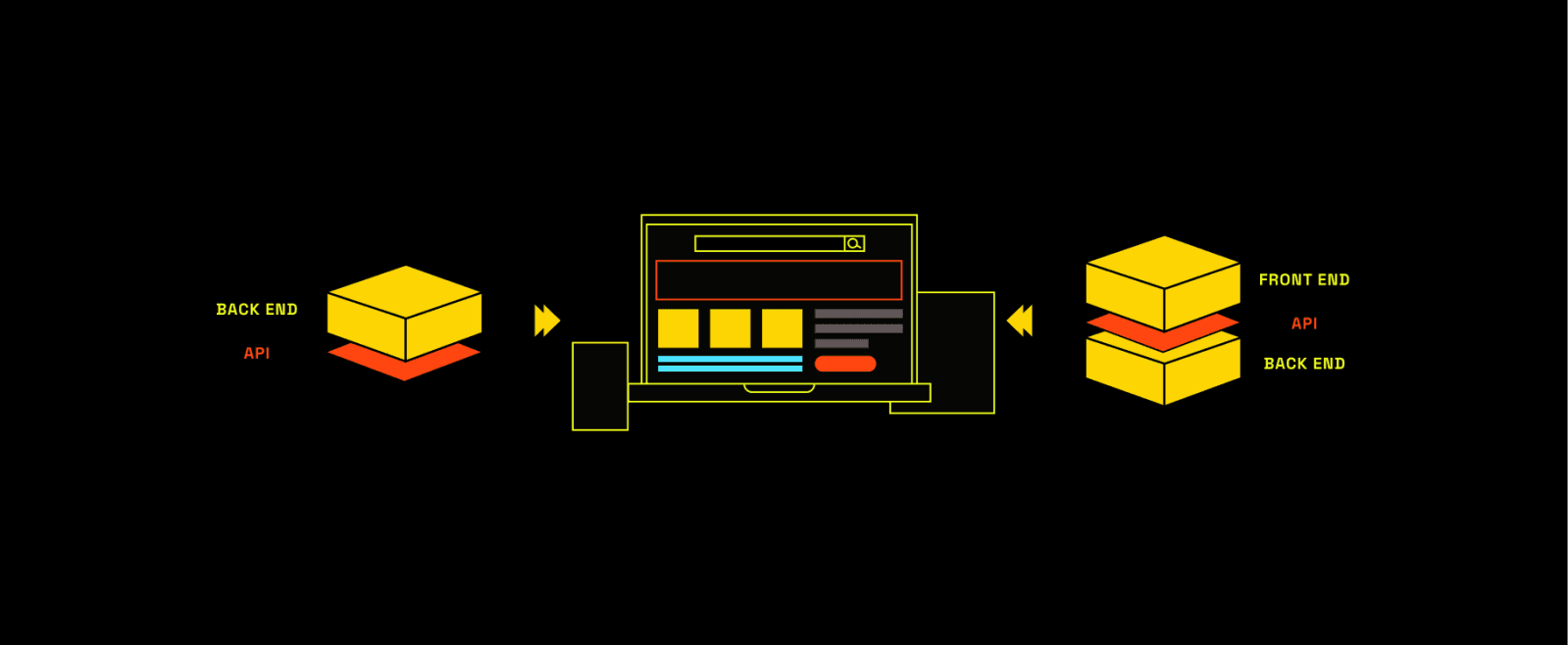Adobe Commerce vs Odoo: Which eCommerce Platform Should You Choose?
Odoo, an all-in-one business management solution, is tailored for small to midsize businesses, offering integrated features like sales, accounting, and inventory management. Its simplicity and affordability make it a go-to for those prioritizing budget and ease of use.
On the other hand, Adobe Commerce is designed for scalability, catering to businesses with expansive catalogs and high sales volumes. While its open-source Community Edition is free, the Enterprise Edition packs powerful features suitable for major brands.
Let’s get started with a more detailed analysis of the platforms to determine the best of Adobe Commerce Vs Odoo.
What is Adobe Commerce?
Adobe Commerce, powered by Magento, is a premier eCommerce platform tailored for medium to enterprises.
It offers a dynamic and scalable environment to craft and enhance your online presence. It's designed to be adaptable to various business needs, whether B2C, B2B, or hybrid, and supports global expansion with multi-website, multi-currency, and multilingual capabilities. Adobe Commerce is widely recognized for its flexibility, customizable architecture, and strong community support.
In terms of eCommerce, adobe also offers-
-
Magento Open Source is a free platform. It offers basic eCommerce capabilities and allows developers to extend the functionality through customizations and extensions. It's suitable for small to medium-sized businesses with development resources..
-
Adobe Commerce Cloud is essentially Adobe Commerce hosted on the cloud, offering the same features as the on-premises version but with additional cloud-specific benefits such as scalability, security, and enhanced performance. It includes integration with Adobe's suite of cloud services, providing a more robust and integrated approach to managing digital experiences across various channels.
What is Odoo?
Odoo is complete business management software that includes various applications to help manage different aspects of an enterprise.
The core of Odoo is open-source software that provides a foundation that can be extensively customized through a modular system, with additional features available as needed.
To understand Odoo better, here are its key components -
- Odoo includes numerous business applications, each designed for a specific department in a company, like sales, CRM, project management, inventory management, manufacturing, financial management, and human resources, among others.
- Odoo's modular structure allows businesses to start with a subset of tools and add more modules as their needs evolve.
- Thanks to its open-source nature, Odoo can be tailored to meet business requirements. The community around Odoo contributes regularly to its development, providing updates, new features, and custom modules.
- Odoo provides strong integration capabilities. The integration extends the functionality of existing systems and enhances overall workflow efficiency.
- Odoo can be deployed on-premise or hosted in the cloud. Odoo Online offers a cloud-based, managed solution ideal for small and medium-sized businesses that prefer to avoid handling server maintenance and software installation.
- Odoo has a modern and user-friendly interface. It is designed to be efficient and easy to navigate, improving user experience and productivity.
Key Differences between Odoo and Adobe Commerce
Both platforms, rooted in open-source foundations, offer robust capabilities. Here's a breakdown of their distinct features:
1. User Experience:
Odoo wins at ease of use. Odoo aims for simplicity and Adobe Commerce, while offering robust features, has a bit of a learning curve.
Odoo Ease of Use:
- Odoo excels with its drag-and-drop builder and dynamic content blocks, which facilitate easy adjustments and updates by users without extensive technical expertise.
- Odoo can be complex to set up initially due to its extensive features. However, once properly configured, it offers a seamless operational experience.
- Odoo features a straightforward menu structure that allows users to easily navigate between different apps and functionalities within the platform. This ease of access is beneficial for new users learning the system.
- Odoo offers a modern and user-friendly interface that includes a dashboard with customizable widgets and drag-and-drop features, which simplify the creation and management of content. This consistent design across various modules makes it relatively easy for users to get accustomed to the system.
Adobe Commerce Ease of Use:
- Adobe Commerce offers a sophisticated store builder that, while powerful, typically requires a deeper technical understanding to fully exploit its capabilities.
- Adobe Commerce requires significant technical knowledge for setup, including a deep understanding of attributes, product types, and categories, which might necessitate professional assistance.
- Adobe Commerce presents more complex navigation due to its comprehensive array of settings and configurations, which cater to a very detailed level of store management.
- Adobe Commerce, while robust and feature-rich, can initially overwhelm new users. It provides extensive customization options that are powerful yet require a deeper understanding to leverage fully.
2. SEO & Marketing Capabilities:
Adobe Commerce provides advanced SEO and marketing capabilities for businesses that need extensive customization and control. Odoo offers sufficient capabilities for simpler needs or a more streamlined approach.
Adobe Commerce SEO & Marketing Features:
- Advanced Customization of SEO Settings: While many platforms offer basic SEO features, Adobe Commerce provides a deep level of customization. Users can fine-tune how SEO settings are applied at a very granular level, including product-specific SEO optimizations which can override global settings.
- Integrated SEO Tools for Layered Navigation: Adobe Commerce automatically manages potential SEO pitfalls associated with faceted navigation by using tools like the ability to add no-follow attributes, apply canonical tags to filter combinations, and prevent indexing of duplicate content, which are not standard in many platforms including Odoo.
- Integrated SEO Tools for Layered Navigation: Adobe Commerce automatically manages potential SEO pitfalls associated with faceted navigation by using tools like the ability to add no-follow attributes, apply canonical tags to filter combinations, and prevent indexing of duplicate content, which are not standard in many platforms including Odoo.
- Auto-Generation of SEO Rich Content: Beyond meta-data, Adobe Commerce can auto-generate SEO-enhanced content based on product data, user-generated content, and reviews, integrating keywords in a manner optimized for search algorithms.
- SEO Analytics and Reporting: Adobe Commerce integrates with Adobe Analytics and other tools, providing detailed insights into SEO performance and user behavior. This data can be used to further refine SEO strategies directly within the platform.
Odoo SEO & Marketing Features:
- Basic SEO Tools: Odoo provides foundational SEO tools such as meta tags and descriptions management. These tools are accessible and easy to use but lack depth in terms of customization and automation.
- Static Content SEO: While Odoo allows for the optimization of product and category pages, it doesn't offer extensive tools for dealing with dynamic content SEO challenges that are commonly faced in e-commerce scenarios.
- Simplified SEO Management: The platform is designed for ease of use, focusing on straightforward implementations without the layers of complexity found in Adobe Commerce. This makes it suitable for businesses with less intensive SEO needs.
 Adobe’s SEO Optimization for a product page
Adobe’s SEO Optimization for a product page
 Odoo’s Interface for Search Engine Optimization
Odoo’s Interface for Search Engine Optimization
3. Sales Analytics & Management:
Adobe Commerce provides a more advanced, detailed suite of analytics tools ideal for businesses that need to understand & react to customer behavior in real time. Odoo offers a more integrated and straightforward analytics experience suitable for smaller businesses or those that prioritize a holistic view of their operations over granular analytics.
Adobe Commerce Sales Analytics & Management:
- Advanced Analytics and Reporting: Adobe Commerce integrates with Adobe Analytics, part of the Adobe Experience Cloud, which provides comprehensive analytics capabilities. This integration allows for deep insights into customer behavior, marketing effectiveness, and detailed e-commerce performance metrics such as cart abandonment rates, conversion rates, and customer lifetime value.
- Segmentation and Targeted Reporting: The platform allows users to segment customers based on various criteria and generate reports specifically tailored to these segments. This helps in understanding specific groups' behaviors and preferences, allowing for more targeted marketing and sales strategies.
- Real-Time Data Insights: Adobe Commerce offers real-time data processing, which is crucial for large e-commerce operations needing up-to-the-minute reporting to make quick decisions about promotions, inventory, and pricing.
Odoo Sales Analytics & Management:
- Integrated Sales and Analytics Dashboard: Odoo provides a unified solution where the sales and analytics functionalities are closely integrated with other business operations like accounting, inventory, and customer management. This holistic approach offers a good overview of business health but with less granularity than Adobe Commerce.
- Customizable Dashboard: Users can customize their analytics dashboard in Odoo to highlight the most relevant business metrics. While not as in-depth as Adobe's offerings, these analytics are user-friendly and sufficient for small to medium-sized enterprises.
- Automated Reports and Actionable Insights: Odoo allows for the automation of reporting processes, providing regular updates that can help businesses track sales performance over time. The insights are actionable but tend to be more general compared to the detailed analysis provided by Adobe Commerce.
 Adobe Shares Comprehensive Analytics and Reporting Options
Adobe Shares Comprehensive Analytics and Reporting Options
 Odoo’s reports are insightful coverage of sales analytics
Odoo’s reports are insightful coverage of sales analytics
4. Integration Capabilities
Adobe Commerce focuses more on e-commerce and external integrations crucial for online businesses, while Odoo offers comprehensive internal integration suitable for managing a wide range of business processes.
Adobe Commerce Integration Capabilities:
- Adobe Commerce offers specialized integrations that enhance e-commerce functionalities, including advanced payment gateways, shipping providers, and third-party marketplace connections. It's designed to optimize online retail operations.
- The platform has a rich ecosystem of extensions available through the Magento Marketplace, allowing users to easily add features and integrate with various external systems.
- It seamlessly integrates with other Adobe products, such as Adobe Analytics and Marketing Cloud, providing a unified content, marketing, and data analytics approach. This is particularly beneficial for businesses that already rely on other Adobe solutions.
- Adobe Commerce supports extensive API capabilities for custom integration with third-party systems, essential for tailored e-commerce solutions and complex business models.
Odoo Integration Capabilities:
- As an ERP system, Odoo integrates various business operations such as accounting, HR, sales, CRM, and more into a single platform. This integration reduces the need for separate software solutions and provides a unified view of all business activities.
- Odoo's modular design lets businesses add or update modules as needed. Each module is made to fit smoothly with others in the platform, ensuring consistent data flow and user experience.
- The Odoo community creates custom modules that expand the platform's functions and integration capabilities.
- Odoo has an open API, which allows it to be easily integrated with other software tools and systems. This is especially helpful for companies that need customized solutions that can adapt to their business processes.
Adobe Commerce Vs. Odoo: Pros and Cons
Odoo Pros and Cons:
Pros:
- Cost-Effective: Being open-source, Odoo is free to download and use. This can be a significant cost-saving factor, especially for startups or small businesses.
- Feature-Rich: Odoo isn't just an eCommerce platform. It comes packed with built-in features like CMS, CRM, and accounting. This integrated approach can streamline your business operations.
- Customizable & Scalable: If Odoo doesn't have what you need out of the box, there's a good chance you can find a module for it. And if not, you have the freedom to develop your own. As your business grows, Odoo can grow with you.
Cons:
- Limited Advanced Features: While the open-source version is robust, it might lack some advanced features paid platforms offer, such as promotional tools or abandoned cart recovery.
- Technical Know-How Needed: Odoo's interface might not be the most intuitive, and setting it up or customizing it might require more technical prowess.
Adobe Commerce Pros & Cons
Pros:
- User-Friendly: Magento is known for its intuitive interface. The drag-and-drop design features can make setting up your store a breeze.
- Marketing & SEO Tools: If driving traffic and sales is your goal, Magento has got you covered with its suite of marketing, SEO, and promotional tools.
- Scalability: Especially with the Enterprise Edition, Magento can handle vast product catalogs and high traffic, making it suitable for large businesses.
- Design Options: With a plethora of both free and paid themes, you can ensure your store looks just the way you want it to.
Cons:
- Cost: Magento's advanced features come at a price. The Enterprise Edition, while feature-rich, starts at a hefty $22,000 per year.
- Resource Intensive: Magento demands a lot from your server, which could mean higher hosting fees. Plus, getting the most out of Magento might require some help from a developer, adding to the costs.
Odoo vs Magento: Which is Right for Your eCommerce Business?
Odoo is an open-source ERP platform that offers a cost-effective solution with integrated features across various business functions, including CMS, CRM, and accounting. Its open-source nature provides significant customizability, making it particularly suitable for businesses that need a flexible solution capable of growing with them. However, while Odoo includes basic eCommerce capabilities, it may not have the specialized, advanced e-commerce tools that more focused platforms offer.
On the other hand, Adobe Commerce, formerly known as Magento, stands as a specialized eCommerce powerhouse. It features a robust set of eCommerce tools designed for scalability, from small businesses to large enterprises, especially evident in its Commerce (formerly Enterprise Edition) version. Adobe Commerce offers a highly customizable platform with strong marketing, SEO, and product management capabilities.
These advanced features and the platform's ability to grow come with higher costs. This includes expenses for development, which can be significant for smaller businesses.
Key Questions to Consider Before Switching:
- What is your budget, and how well does it align with the costs associated with each platform, including potential hosting or developer fees?
- How important is it to have integrated tools such as CRM or accounting within your eCommerce platform?
- Are you equipped to handle the technical demands of setting up and customizing your chosen platform?
- How crucial are advanced marketing and promotional tools to your sales strategy?
- Do you anticipate needing to scale your operations significantly, and can your chosen platform handle potential increases in traffic?
FAQs
Is Odoo good for eCommerce?
Yes, Odoo is a good choice for eCommerce, especially for businesses looking for an integrated suite of business applications. It offers a comprehensive set of tools that include not just eCommerce, but also CRM, inventory, accounting, and more, allowing for seamless integration across various business operations.
What are the benefits of Odoo eCommerce?
The key benefits of Odoo eCommerce include its integration with other Odoo apps, customizable templates, ease of product management, and built-in SEO tools. It also offers flexibility in payment and shipping options, and its modular structure allows businesses to add or customize features as needed.
What is better than Odoo?
"Better" depends on specific business needs. For businesses seeking more specialized eCommerce features, platforms like Shopify or Magento might be better. For those needing a comprehensive business solution with strong ERP capabilities, SAP Business One or Microsoft Dynamics could be alternatives.
Do big companies use Odoo?
Yes, several large companies use Odoo for its versatile and integrated business applications. Its adaptability makes it suitable for various industries and company sizes, including larger enterprises.
Is Odoo in demand in the United States?
Odoo has been gaining popularity in the United States, particularly among small to medium-sized businesses. Its affordability and comprehensive suite of applications make it an attractive choice for businesses looking to streamline their operations with an integrated system.




